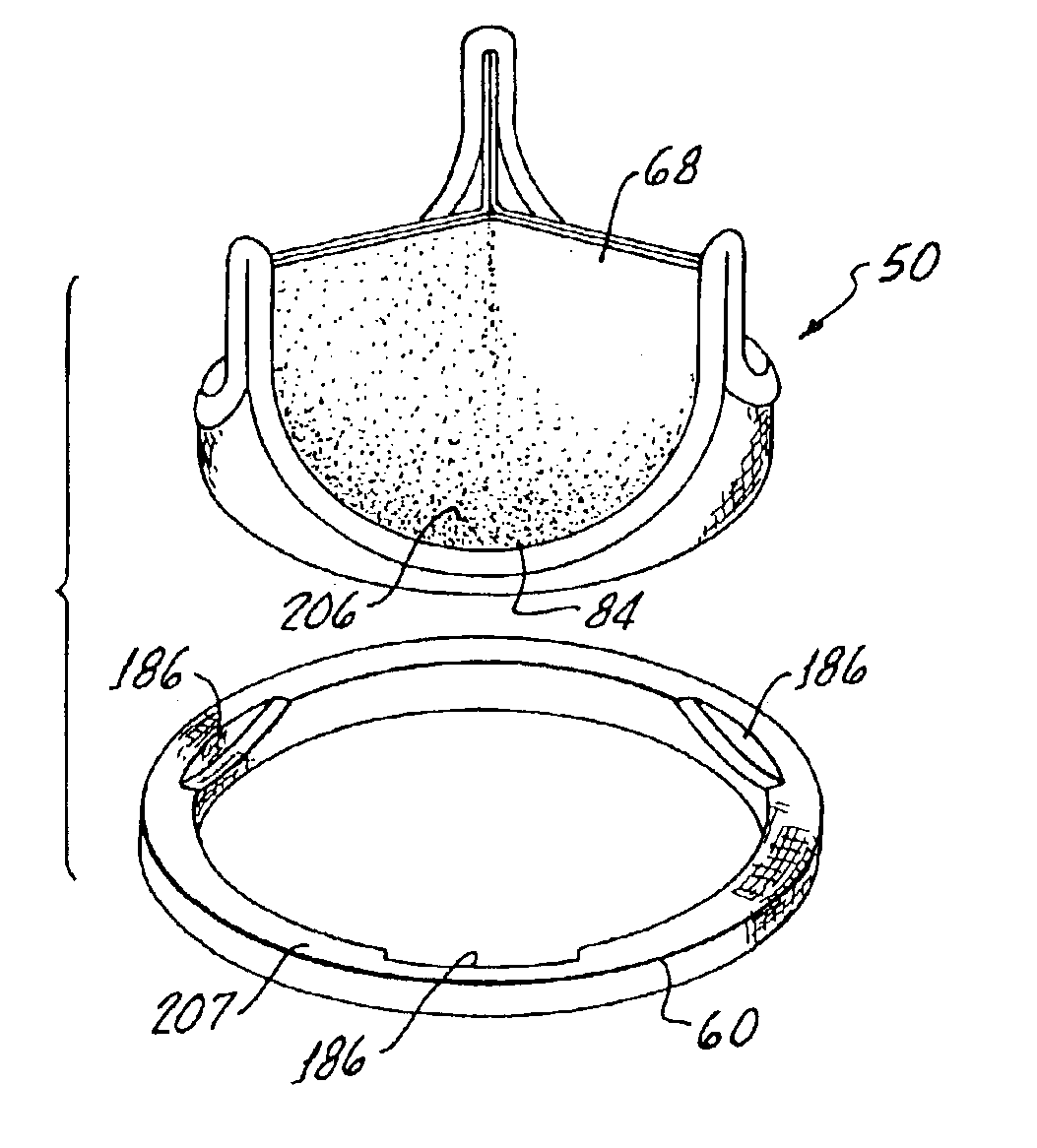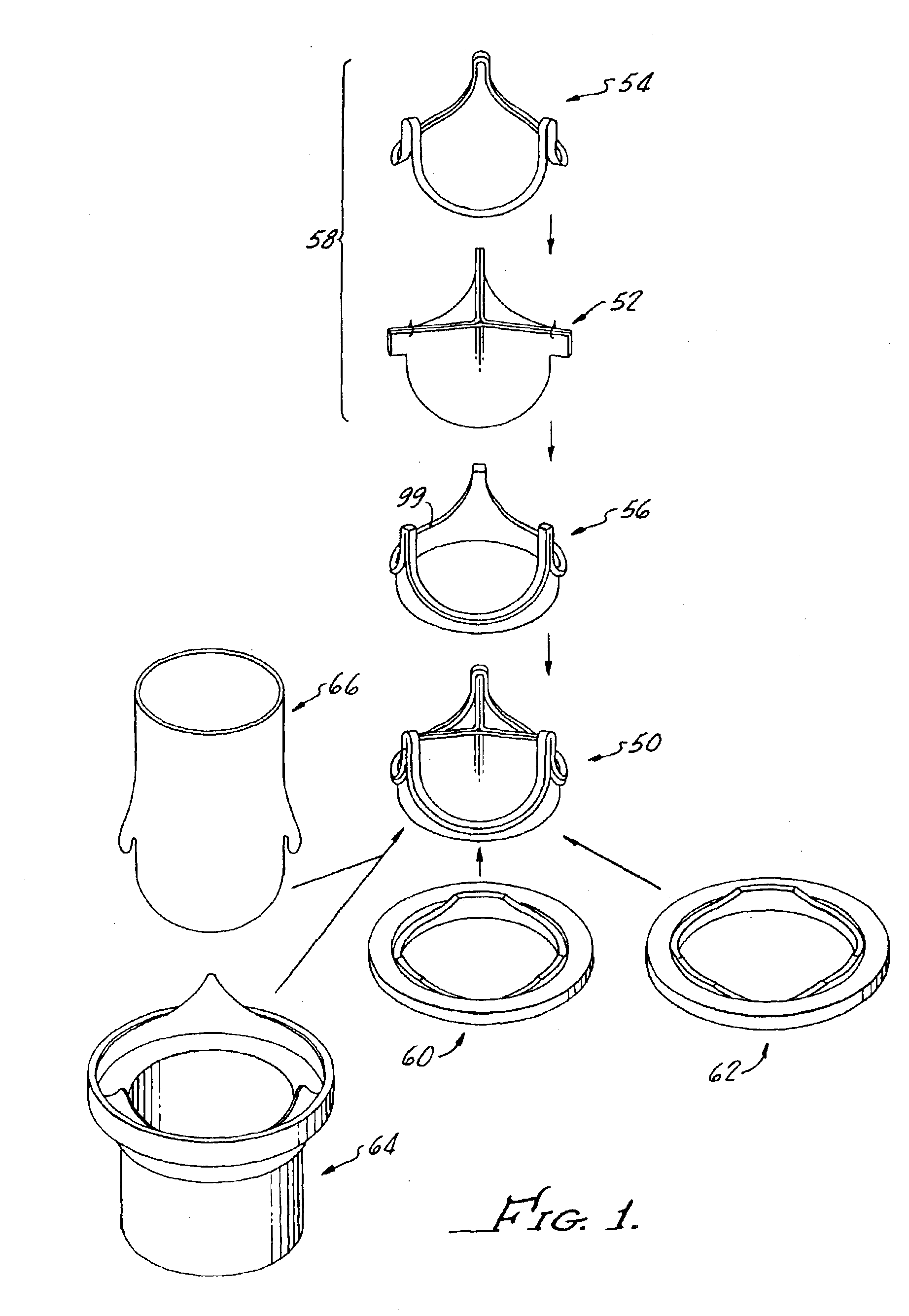Heart valves and suture rings therefor
a heart valve and suture technology, applied in the field of heart valves, can solve the problems of valves being subject to constant mechanical stress, valves may generate clicking noise, and within the human body may attack and stiffen or “calcify” the tissue leaflets of the valve, so as to reduce stress points, and improve the long-term functionality of the valve assembly.
- Summary
- Abstract
- Description
- Claims
- Application Information
AI Technical Summary
Benefits of technology
Problems solved by technology
Method used
Image
Examples
Embodiment Construction
[0055]Referring more particularly to the drawings, FIG. 1 is an exploded assembly view, illustrating exemplary alternative embodiments of an improved, adaptable tissue valve 50, its individual components, and its alternative configurations produced in accordance with the teachings of the present invention. Valve 50 includes a pre-aligned, standardized leaflet subassembly 52, a cloth-covered wireform 54 and a support stent 56. As will be discussed in detail below, during assembly of valve 50, the pre-aligned leaflet subassembly 52 and the cloth-covered wireform 54 are first assembled in accordance with the present invention to form a tissue-wireform structural assembly 58 (see FIGS. 2 to 9). Then, the structural assembly 58 is secured to stent 56 to form the assembled valve 50.
[0056]As illustrated FIG. 1, valve 50 is uniquely configured to enable production of several useful alternative valves for a variety of end-use applications. For example, if the desired application is the repla...
PUM
 Login to View More
Login to View More Abstract
Description
Claims
Application Information
 Login to View More
Login to View More - R&D
- Intellectual Property
- Life Sciences
- Materials
- Tech Scout
- Unparalleled Data Quality
- Higher Quality Content
- 60% Fewer Hallucinations
Browse by: Latest US Patents, China's latest patents, Technical Efficacy Thesaurus, Application Domain, Technology Topic, Popular Technical Reports.
© 2025 PatSnap. All rights reserved.Legal|Privacy policy|Modern Slavery Act Transparency Statement|Sitemap|About US| Contact US: help@patsnap.com



